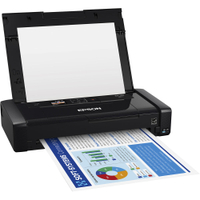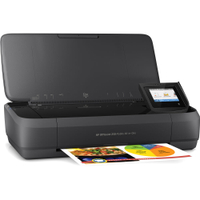Digital Camera World Verdict
I like that the Canon Pixma TR150 folds down small enough to stash in a desk drawer, and that it makes an ideal travelling companion. I’m also impressed at the speed and quality of output for both documents and photos, but the lack of an internal paper cassette means you have to carry paper separately.
Pros
- +
Folds down small
- +
Speedy, high quality output
- +
Reasonable running costs
- +
Wi-Fi & Wi-Fi Direct
Cons
- -
No scanner
- -
No internal paper cassette
- -
No battery with base model
- -
No Bluetooth nor NFC
Why you can trust Digital Camera World
I’ve long been a fan of Canon inkjet printers. Over the last three decades, I’ve found them to give unbeatable performance in terms of print quality and reliability. Most of the Canon inkjets that I’ve used and owned have been desktop models, ranging from A4/letter sized cartridge-based and ‘MegaTank’ printers, right up to large-format photo printers like the Canon Pixma Pro-200 and Canon ImagePrograf Pro-300.
The Pixma TR150 is a relatively small-scale affair, designed for a life on the road. It’s ideally suited to travelling workers who need to create hard copies when visiting clients, but also does a surprisingly good job of printing color photos on glossy paper, at sizes up to and including A4/letter borderless prints. As such it sets its sights on being one of the best compact printers on the market.
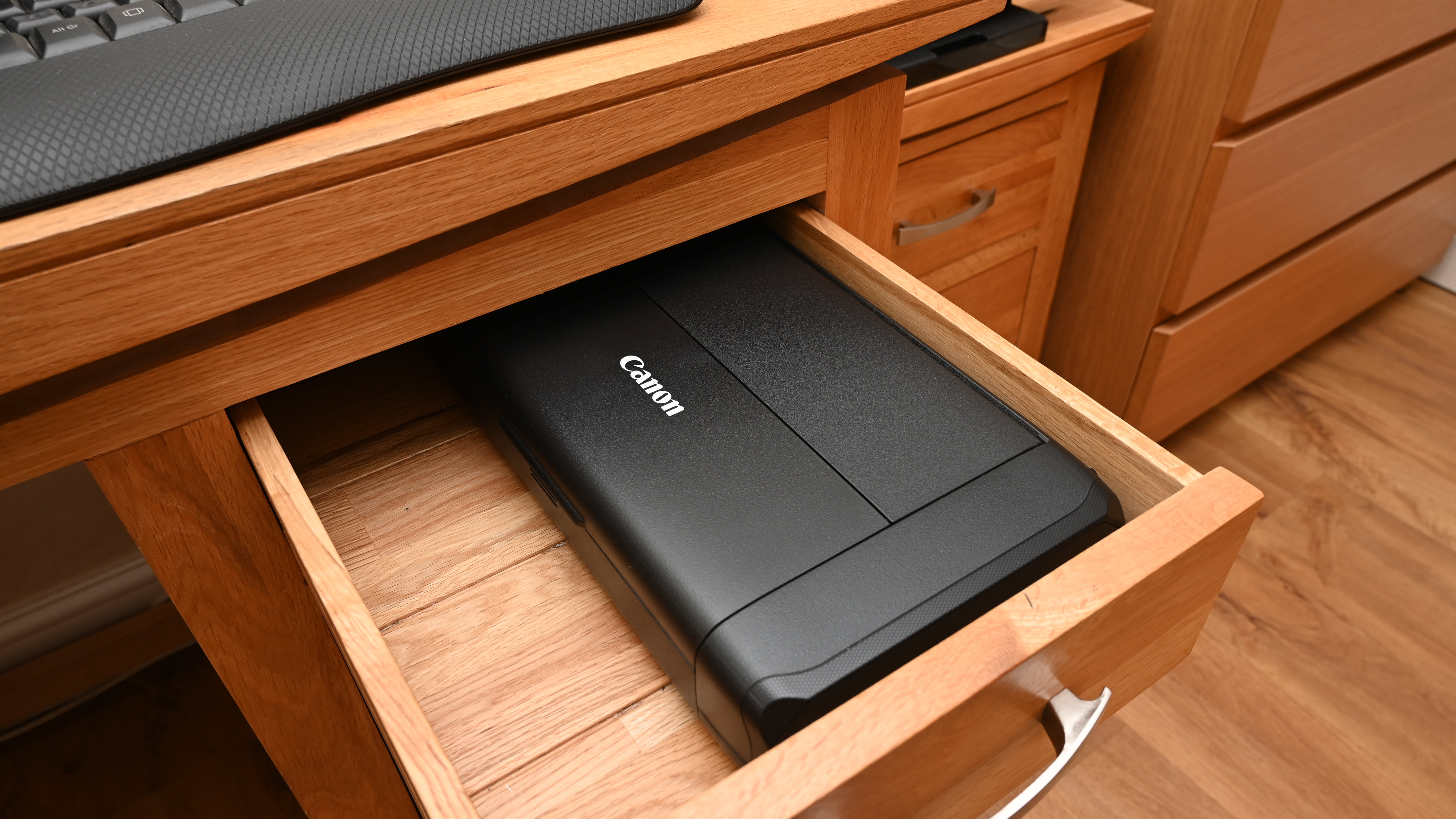
Canon Pixma TR150: Specifications
Ink cartridges | Black pigment, tri-color dye |
Max print size | Letter/A4 |
Max print speed | 9ipm mono, 5.5ipm color |
Max print resolution | 4800 x 1200 dpi |
Input trays | 1, 50 sheets |
Scanner | No |
Display screen | 1.44-inch OLED |
Interfaces | USB-C, Wi-Fi, Wi-Fi Direct |
Dimensions (WxDxH) | 322 x 185 x 66mm |
Weight | 2.1kg |
Canon Pixma TR150: Price
Miniaturization often comes at a high cost. Gadgets that are designed to be really compact and lightweight typically come with inflated price tags and, unsurprisingly, the Canon Pixma TR150 costs more than many desktop printers. Even so, I think it’s reasonably priced and the cost is quite similar to that of the Epson WorkForce WF-110W mobile printer. I like that there are two purchase options, so you can buy the printer on its own for $180 / £200 / AU$396 without the optional battery back, or for $250 / £260 / AU$487 complete with the Li-ion rechargeable battery.
Inkjet printers have long been criticized for the price of replacement ink cartridges and, in some cases, a single set costs as much as the printer itself, typically sold with ‘setup cartridges’. Running costs for this mobile printer are actually pretty reasonable, based on dual mono and tri-color cartridges that are competitively priced and have pretty good stamina.
Canon Pixma TR150: Design & Handling
The Canon Pixma TR150 is the fruition of some clever design work. It’s super-quick and easy to lift out the paper input and output trays for operation, and to fold them in again for stowage. I like that it folds down so small that it can fit in a desk drawer or small carrying bag. The only catch is that the power supply is separate and the paper can’t be stored in the printer with the input tray closed, so these items need to be carried separately. Even so, the printer itself only measures 322 x 185 x 66mm and weighs just 2.1kg, so it’s eminently portable.
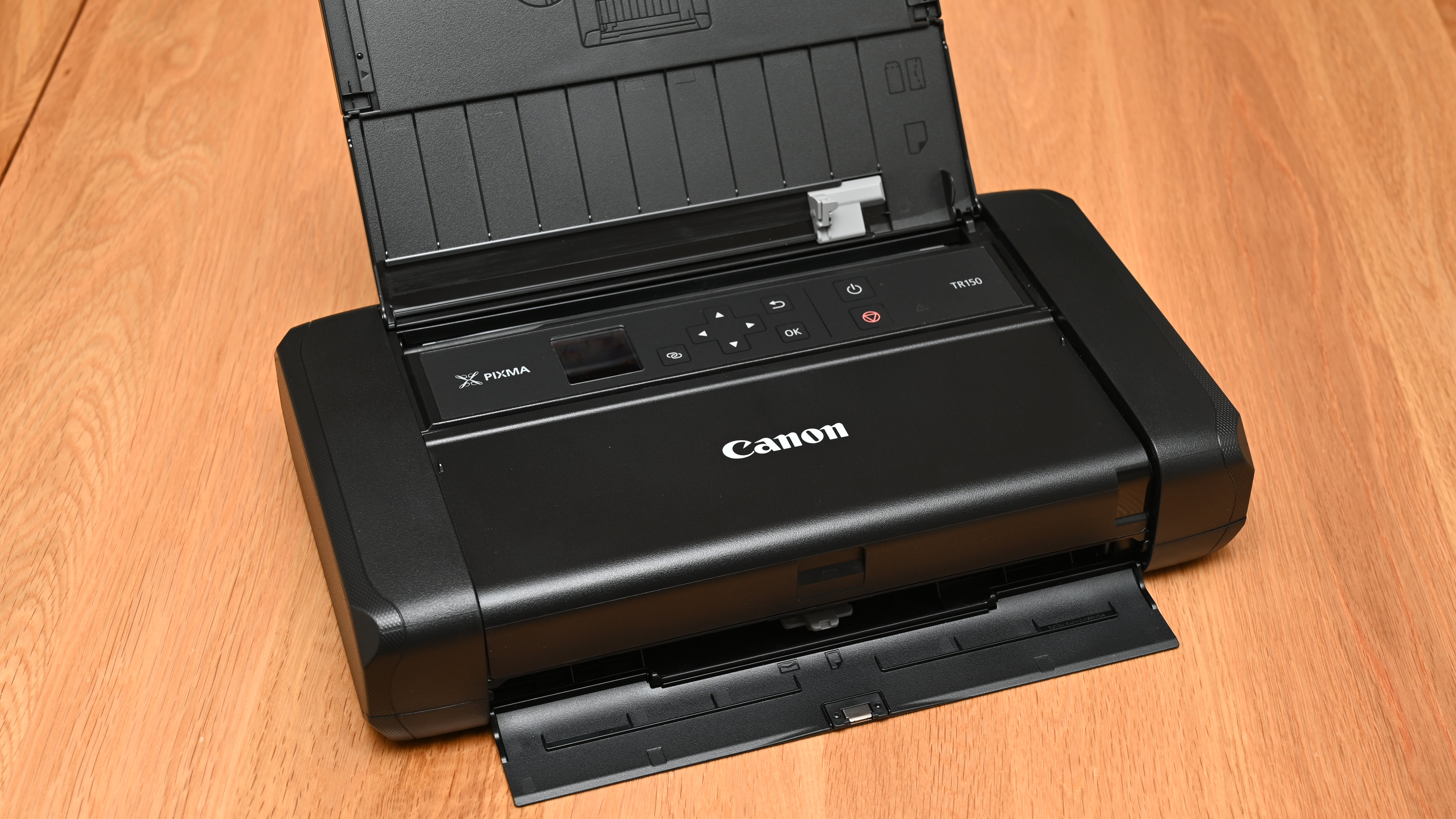
The size and weight increase a little if you opt for the Li-ion battery pack, either buying it as a package with the printer or as an optional extra, further down the line. The battery clips into a holder and the complete assembly screws to the back of the printer. The battery can be charged via the printer’s regular mains power adapter, or from a USB charger connected to the printer’s USB-C socket.
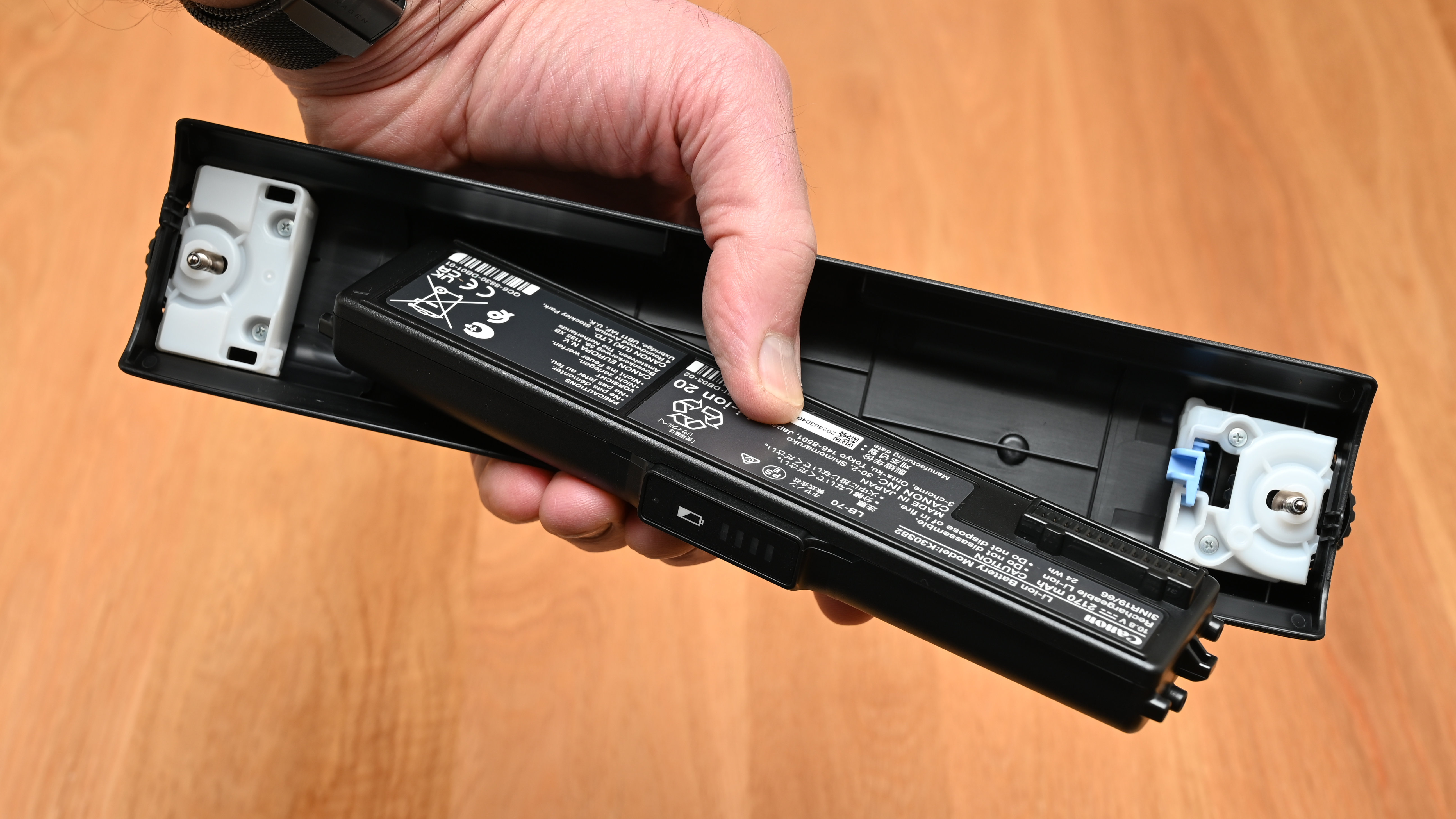
The battery is good for 330 prints on a full charge, and an exhausted battery takes about 2 hours 20 minutes from the power pack or 5 hours from a 1.5A USB charger. A row of 4 status LEDs show charging progress and how much battery life remains during use.

Setting the printer up for first use is quick and easy. It comes with a print head in a separate bag, and two cartridges. After removing packing pieces, it’s a simple case of fitting the print head and inserting the cartridges.
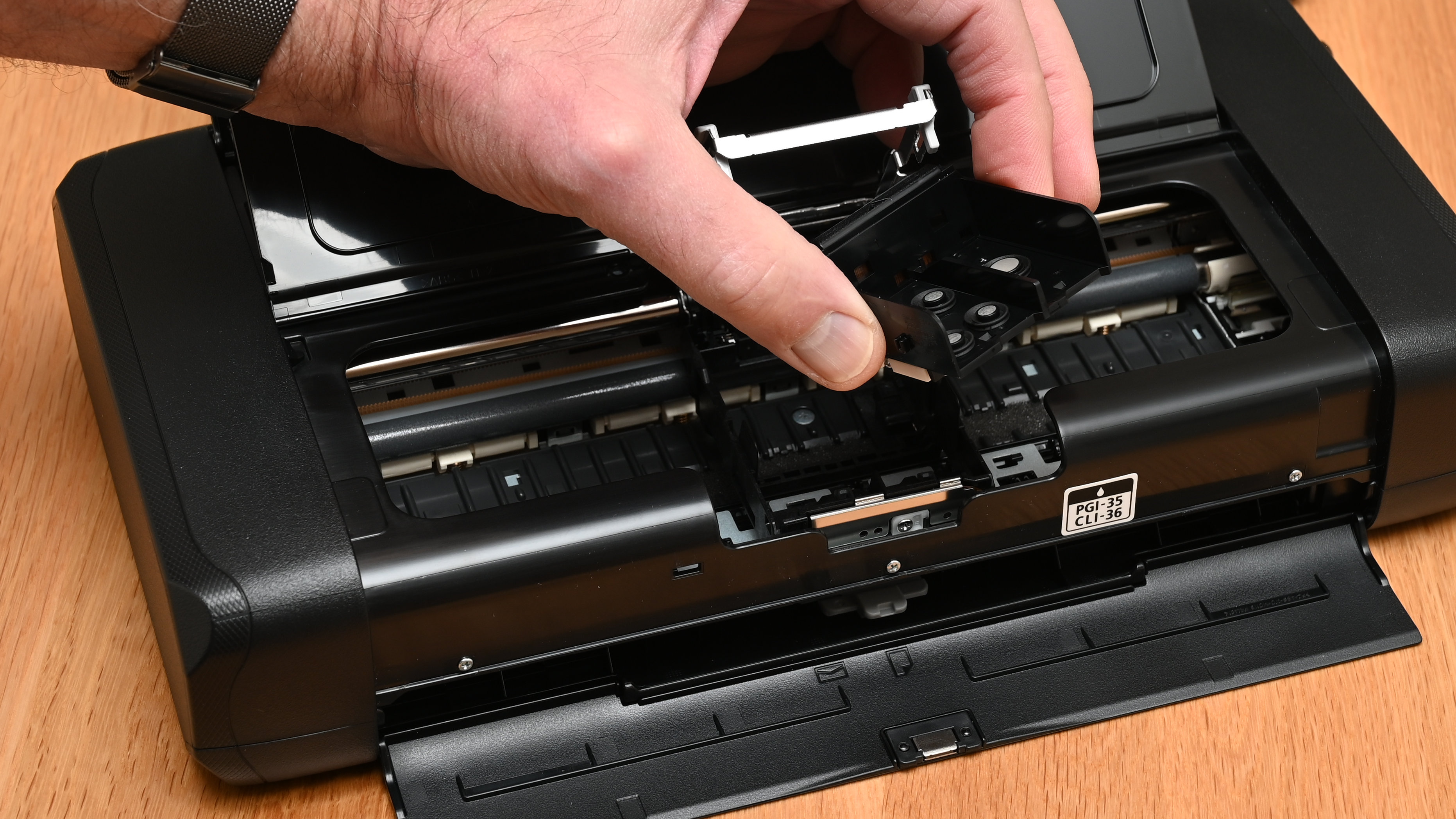
Once the print head and cartridges are fitted, there’s an optional print head alignment routine which takes about 5 minutes to complete. It’s well worth running this to ensure optimum print quality.
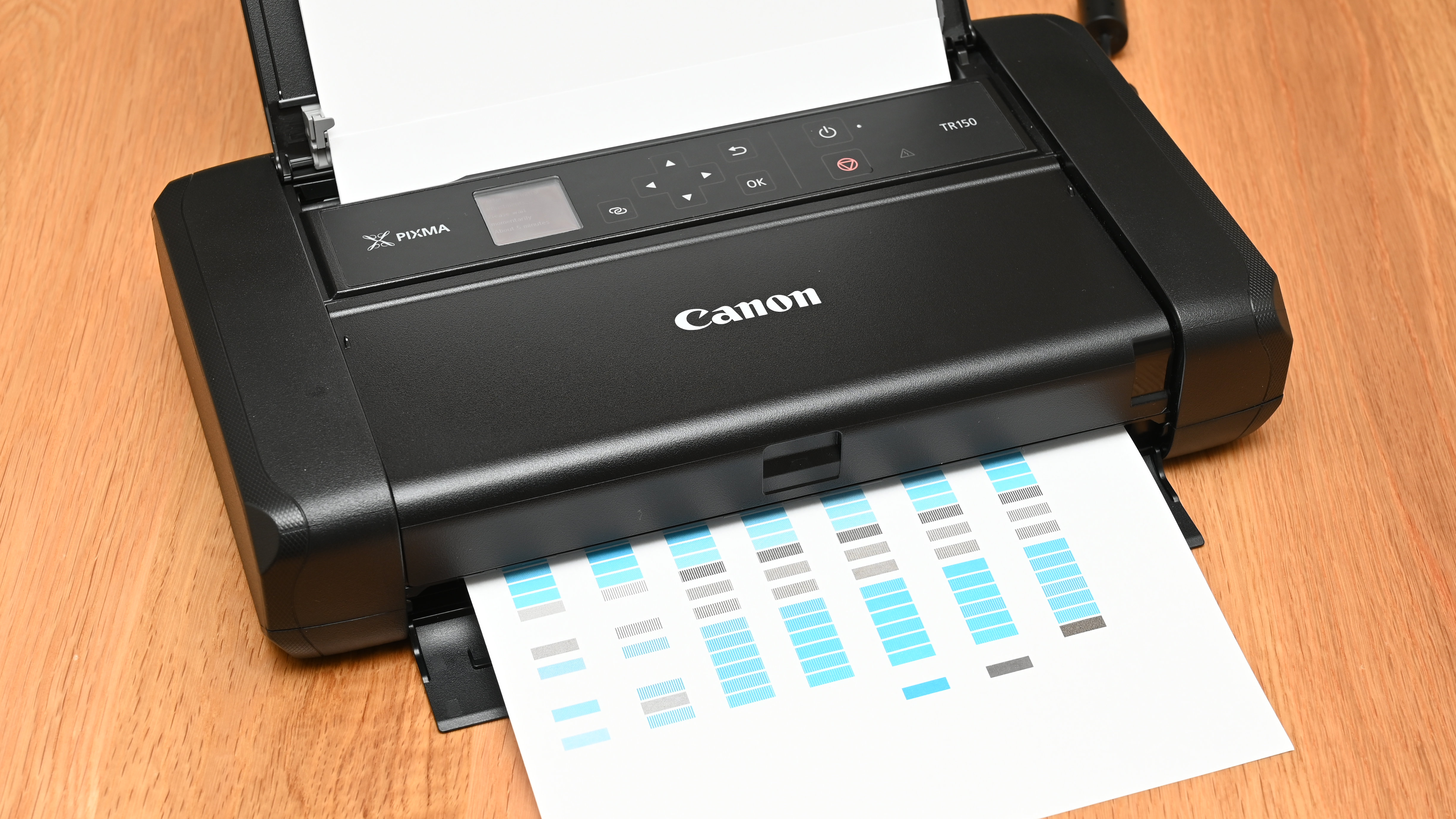
The two ink cartridges themselves consist of a pigment-based black cartridge and a dye-based tri-color cyan, magenta and yellow cartridge. I like this ‘hybrid’ arrangement as it enables robust, smudge-resistant mono text on plain paper, as well as smooth output on glossy and luster photo paper. More on that later.
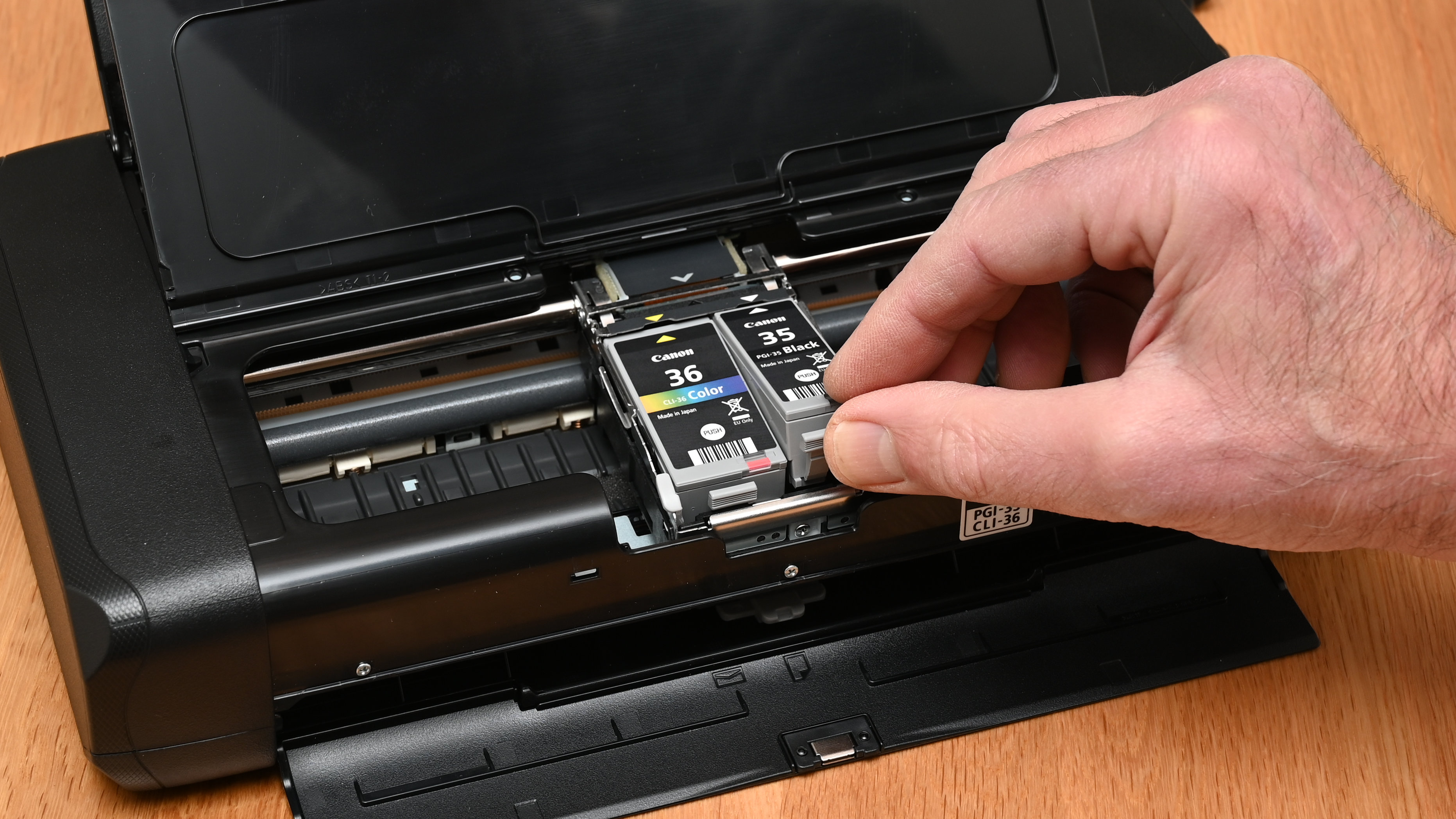
Typical of Canon printers, the software driver for PC and Mac is very straightforward and intuitive, whether you’re using a USB or Wi-Fi connection. For wireless printing, the TR150 is compatible with Wi-Fi and Wi-Fi Direct, the latter being useful when you’re not within range of a router. However, there’s no Bluetooth nor NFC connectivity. Back on the plus side, the printer works with the Canon PRINT app, AirPrint (iOS) and Mopria (Android). I also like that you can store up to 5 different templates in the printer, for example business forms and the like, and print them at the touch of a button without any other devices being connected.
This gallery of screenshots shows the main sections of the Windows printer driver.
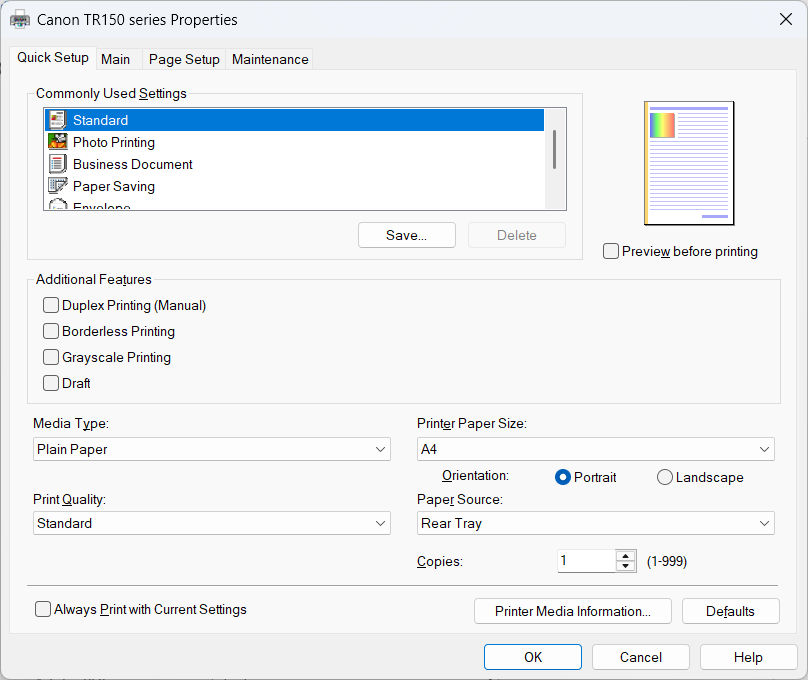


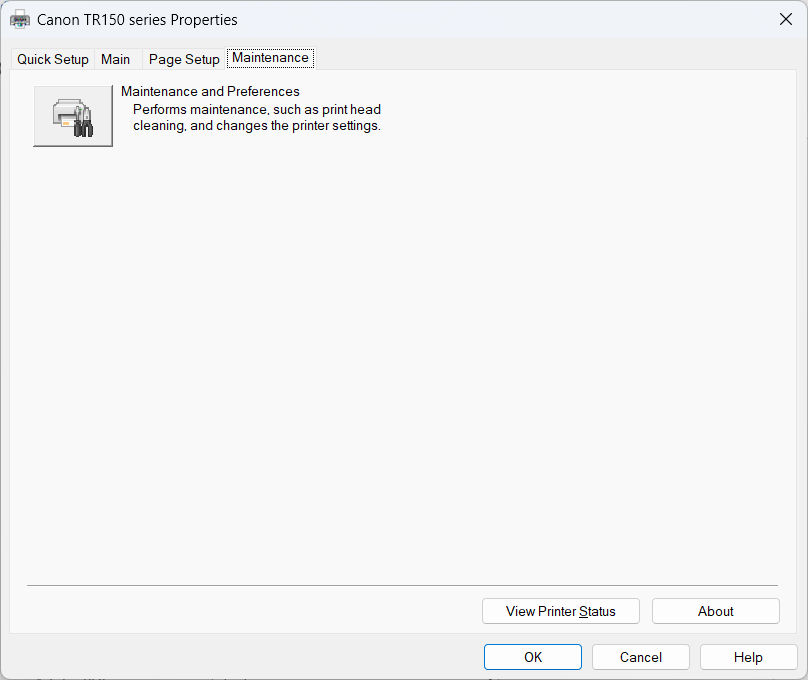
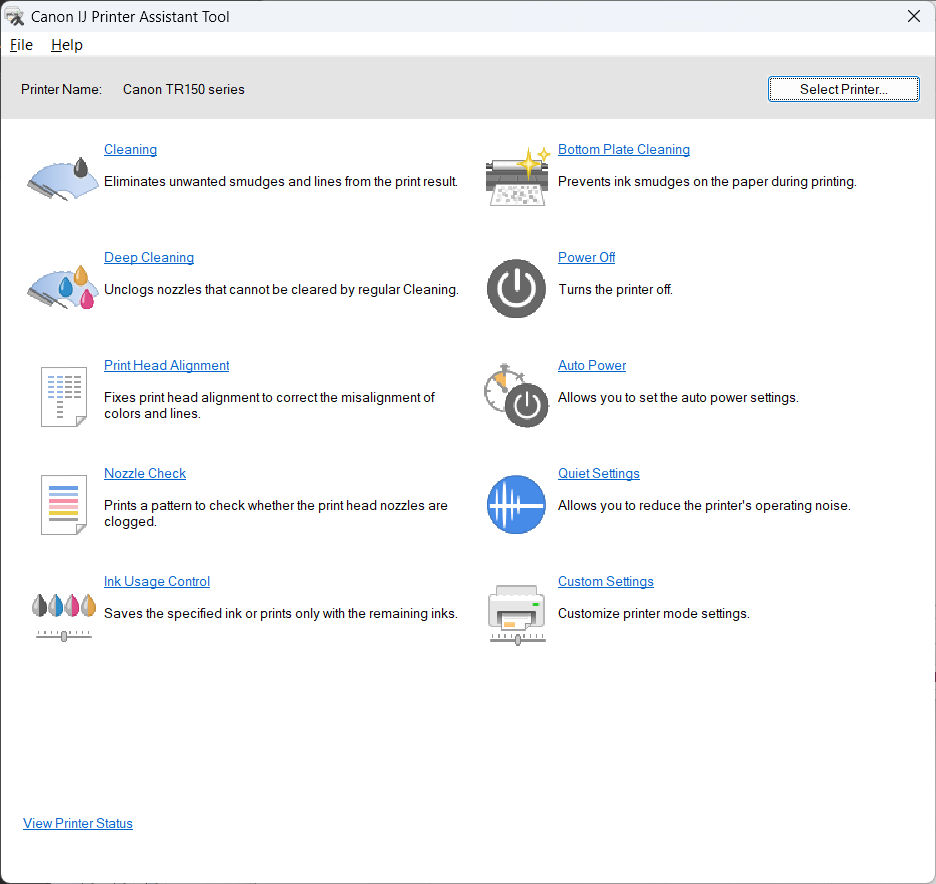
A color touchscreen would be a very tight fit in such a small printer but I actually prefer the 1.44-inch mono OLED screen and its supporting range of buttons. These all work together to provide a very versatile and intuitive control system.

Canon Pixma TR150: Performance
Compact printers can often be rather pedestrian when it comes to print speed but the TR150 is no slouch. It’s rated at 9ipm (impressions per minute) for mono and 5.5ipm for color. In my tests, I found that the ‘first page’ output was also brisk, at 7 seconds for a full A4/letter page of mono text, and 20 seconds for a page of mixed text and color graphics. 6x4-inch borderless color photos took 51 seconds each, and a full A4 borderless color photo took 2 minutes 11 seconds.
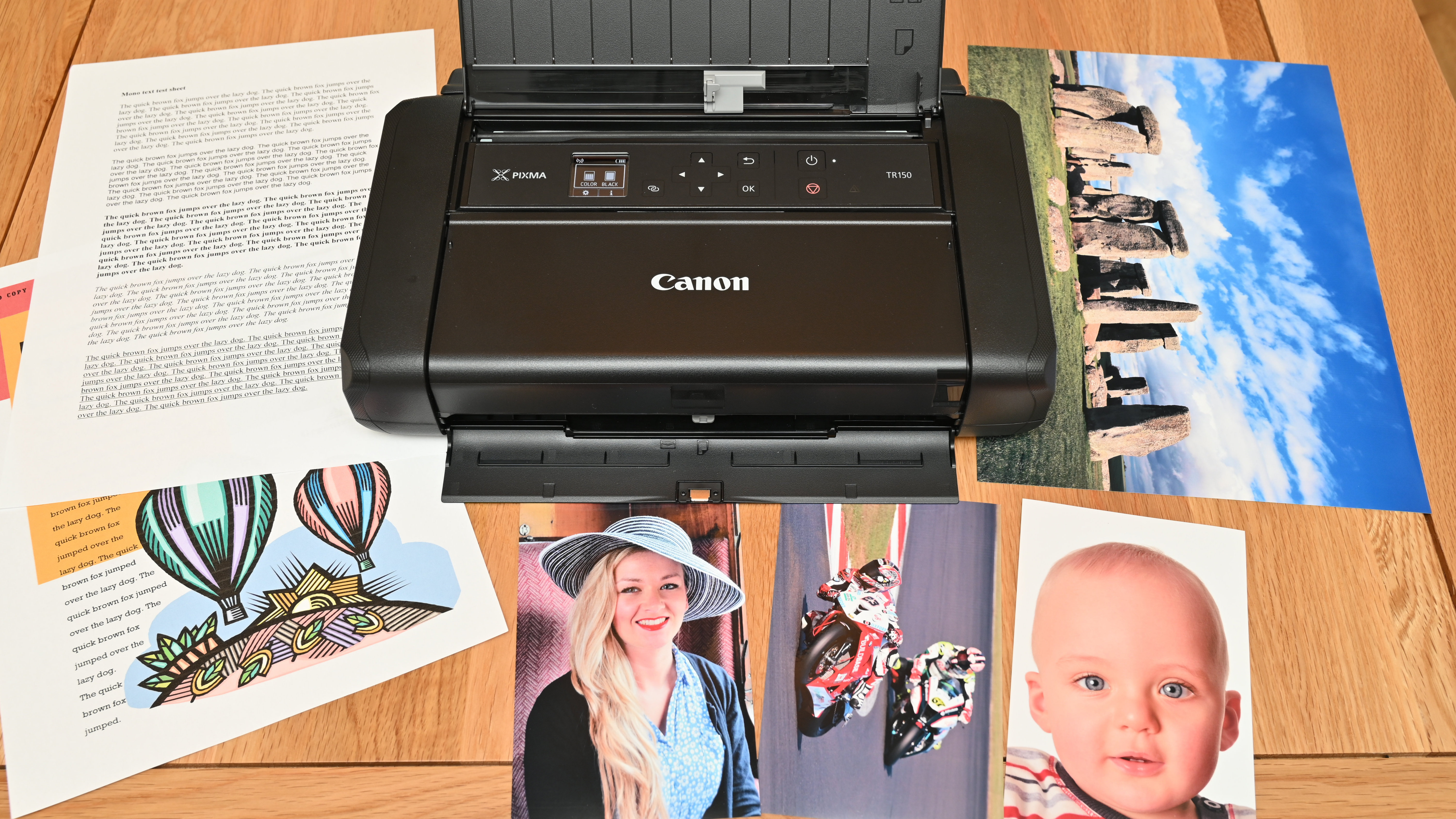
As I’ve mentioned, the pigment-based black ink enables solid mono text that’s resistant to smudging. I’m glad that the tri-color cartridge contains dye-based inks for cyan, magenta and yellow. Unlike with pigment-based inks, this enables the colored inks to pass completely through the protective outer layer of glossy and luster photo papers, so the results are smooth and uniform, with no bronzing or ‘gloss-differential’. What surprised me is just how good color photos look from this printer. The pigment-based black ink is only for plain paper, so color photos have no black ink and rely solely on a mix of cyan, magenta and yellow to produce ‘composite black’ for photos. This often results in a lack of richness and detail for areas of dark shadow but the TR150 very much impressed me with its color rendition and solid-looking blacks.
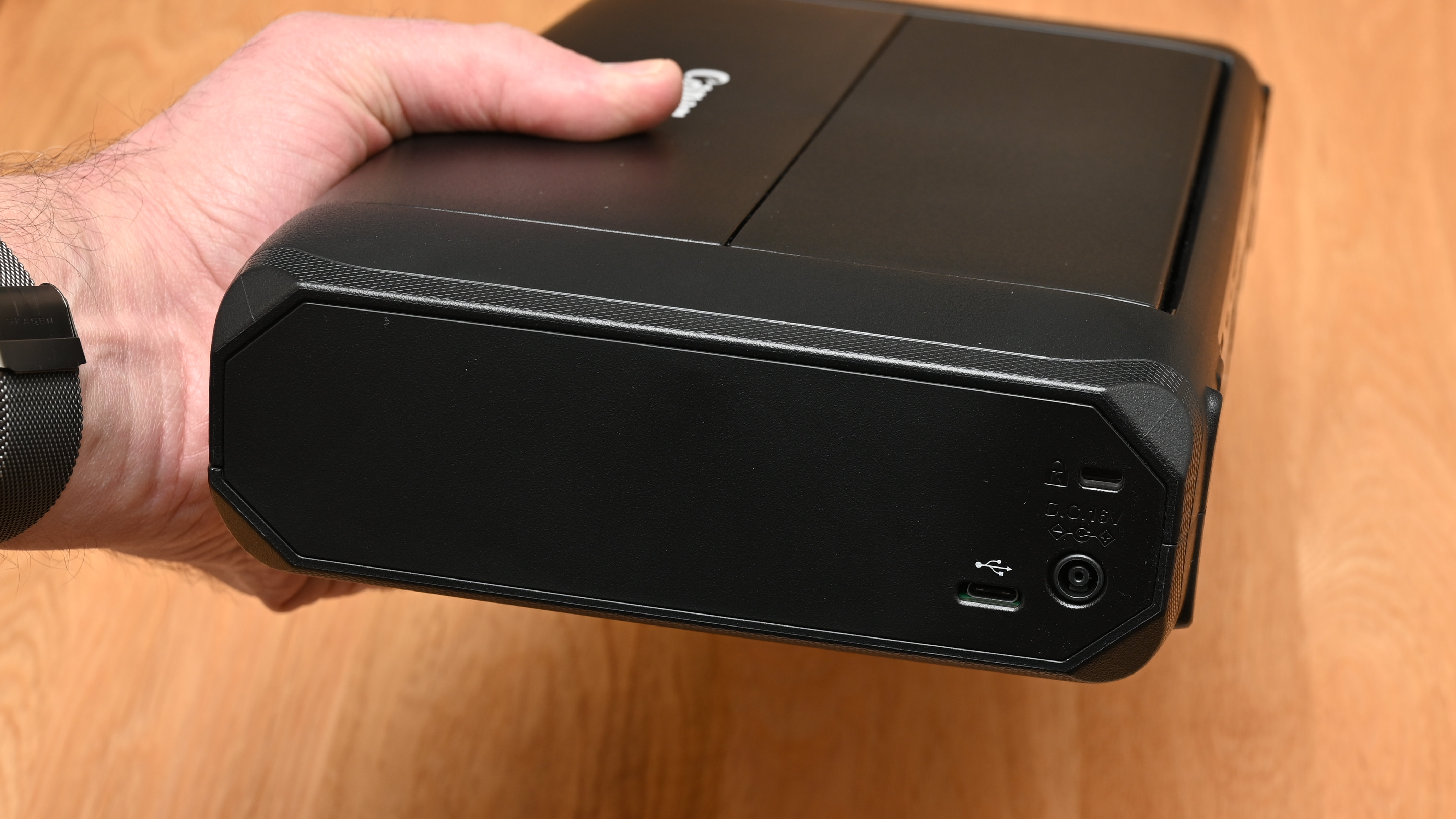
As well as speed and print quality, I always think that running costs are a key performance factor of any inkjet printer. The TR150’s cartridges are good for around 200 mono and 260 color A4/letter pages. The tri-color cartridge also has sufficient capacity for around 100 6x4 photos. The replacement cost of cartridges is competitive, at around US $200 / UK £19 / AU$ for the clack cartridge, and US $18 / UK £15.50 / AU $39. For 6x4-inch photos, including sheets of high-quality Canon Photo Paper Plus Glossy II, you’re looking at around US 40c / UK 40p / AU 120c per print.
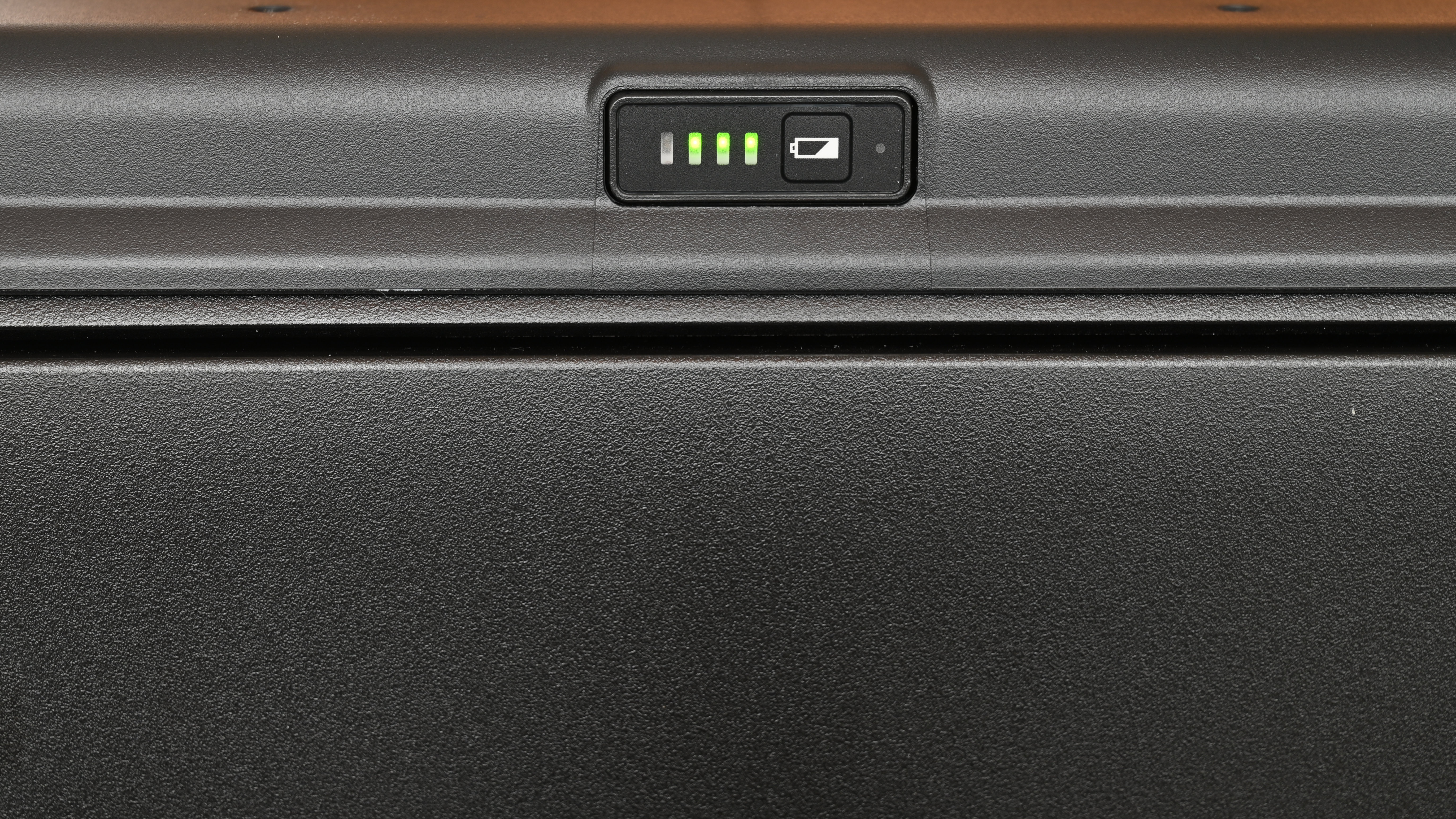
Canon Pixma TR150: Verdict
I really like the little Canon Pixma TR150. It’s small enough to take pretty much anywhere and everywhere, and it feels sufficiently robust to tackle the journey. I like that print speeds are pretty fast for mobile printer, and that print quality is very impressive for both mono/color documents as well as for color photos. I’m also pleased about the range of USB-C, Wi-Fi and Wi-Fi Direct connectivity, although there’s no Bluetooth nor NFC.
The purchase price and running costs are reasonable, but I feel the pricier kit with the ‘optional’ Li-ion battery pack is much the better buy, so you can print on the move without needing to find a mains electricity outlet.
Features | There’s a smart range of features and I like the smart mono OLED display and intuitive control panel. | ★★★★★ |
Design | It’s a clever design that enables excellent portability, but you have to carry the power supply and paper independently. | ★★★★ |
Performance | For a mobile printer, it’s a star performer in terms of speed and output quality, with surprisingly good photo printing. | ★★★★★ |
Value | The purchase price and running costs are both reasonable, although the base kit without the battery might be a false economy. | ★★★★ |
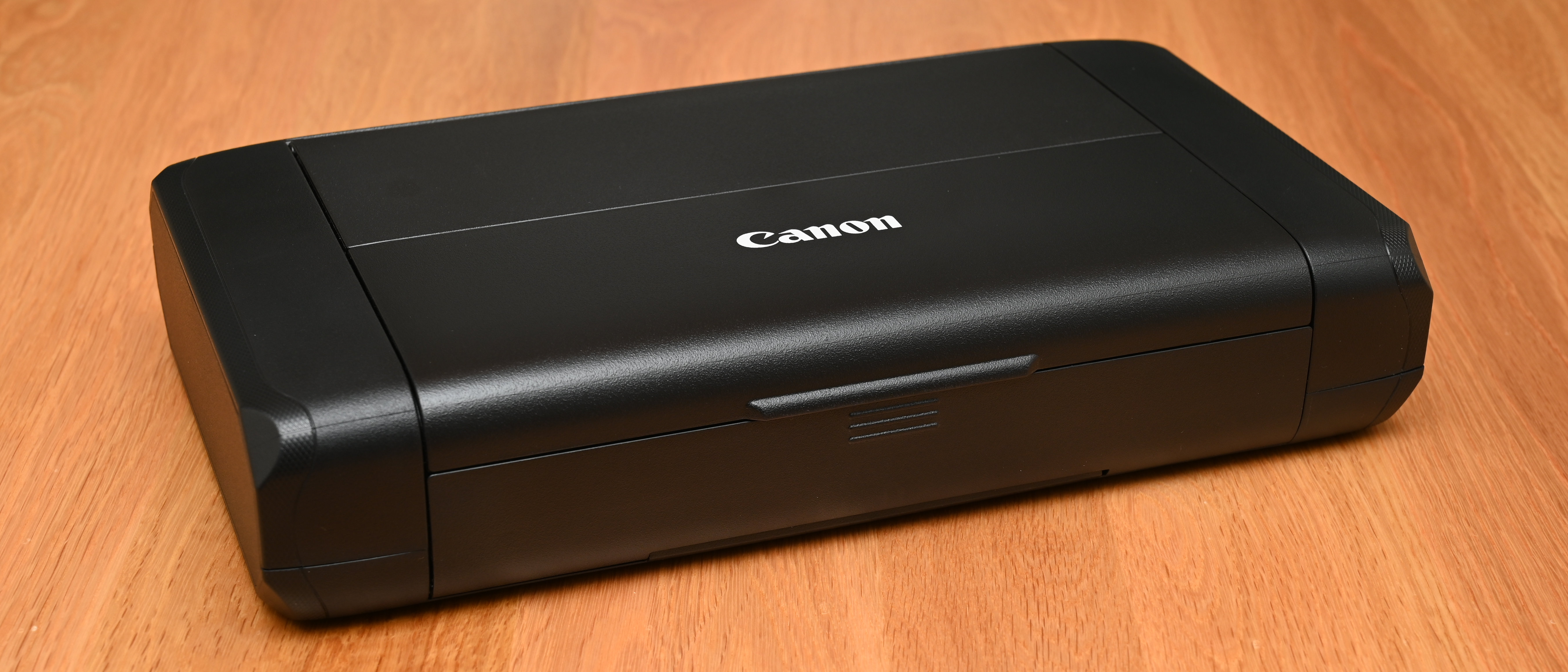
Alternatives
The Epson WorkForce WF-110W is another 4-ink mobile printer but this one uses all pigment-based inks and isn’t so adept at photo printing.
The HP OfficeJet 250 includes a scanner and color screen but is larger and heavier and has lackluster photo quality.
Matthew Richards is a photographer and journalist who has spent years using and reviewing all manner of photo gear. He is Digital Camera World's principal lens reviewer – and has tested more primes and zooms than most people have had hot dinners!
His expertise with equipment doesn’t end there, though. He is also an encyclopedia when it comes to all manner of cameras, camera holsters and bags, flashguns, tripods and heads, printers, papers and inks, and just about anything imaging-related.
In an earlier life he was a broadcast engineer at the BBC, as well as a former editor of PC Guide.
You must confirm your public display name before commenting
Please logout and then login again, you will then be prompted to enter your display name.

